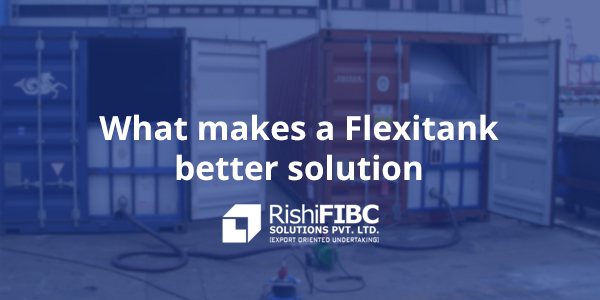What Makes A Flexitank Better Solution
Logistics play an important role in both domestic and international trade. Hence, any improvement or enhancement is lapped up by those in the trade. As compared to solids, transporting bulk liquid has always been a challenging job for the shippers. Quite understandably, shippers are more than pleased with the improved convenience and better economics offered by flexitanks over the traditionally used ISO tanks.
While ISO tanks have been used for years, the enterprises have always been irked by their high operational costs. What is even more burdensome for the enterprise is their high cleaning costs and the cost of empty-returns. The arrival of flexitanks for liquid transport was therefore warmly embraced by the industry that was longing for a less demanding and more convenient means to transport bulk liquid.
What are ISO tanks?
ISO tanks are stainless steel tanks that come in cylindrical shape and are built according to standards laid down by International Organization for Standardization (ISO). Layers of protective coatings surround the tank depending on the nature of the cargo being carried inside. ISO tanks carry both hazardous and non-hazardous liquid. These tanks can be transported by rail, road, or boat.
What are Flexitanks?
Flexitanks are a like a flexible tank bags that are designed to be installed inside a standard 20ft container. You can transport 10,000-24,000 liters of non-hazardous liquid using a flexitank. A flexitank is made using multiple layers of polythene. Most flexitanks are designed for single use, hence you do not require them to clean or return. These are also less harmful to the environment as these can be recycled. A flexitank is available in different varieties and sizes and you can also have customized flexitanks that meet your requirement. Hence the overall cost of using flexitanks is much lower compared to other traditional means of bulk liquid transport such as an ISO tank.
Why are Flexitanks being preferred over ISO Tanks?
While both flexitanks and ISO tanks are designed to carry bulk liquid, there are some valuable flexitank advantages that make them a more suitable option. Here we discuss some of the reasons.
Reduced costs – The carrying capacity of both flexitanks and ISO tanks are same, however, the shipping freight of a standard 24,000-liter flexitank is charged according to the price of a 20-foot container. This is comparatively lot less than the cost charged for an ISO tank.
More convenient – The flexitanks are easier to load and unload. Besides, the supply and distribution cost is higher for ISO tanks as compared to the cost associated with supply and distribution of a flexitank.
More Hassles – You need to take care of the rental charge, return and cleaning charges when using an ISO tank. On the other hand, a flexitank is free of such charges and hassles.
Easily accessible – Flexitanks are always available hence you can easy get access to them. While ISO tanks are limited in number and therefore you have to book your order in advance.
Related: Using Flexitanks for bulk liquid transport has the following benefits and applications
Flexitank advantages, therefore, make them a better choice over ISO tanks for the shippers. Rishi FIBC is a prominent flexitank manufacturer in India. Contact us to know more about the features of flexitank for liquid transport or to place your order for customized flexitanks.



